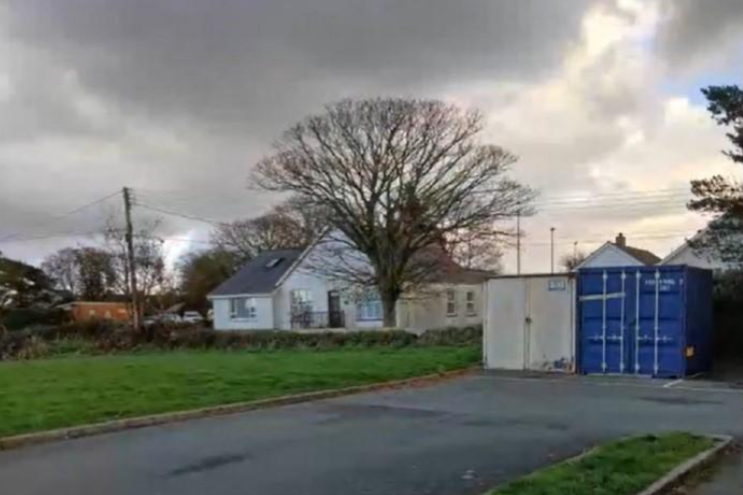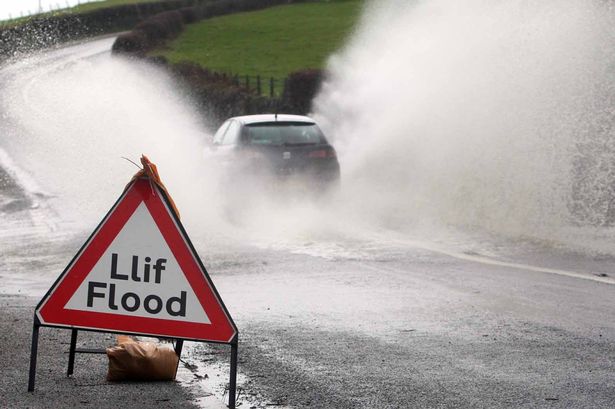Climate
The Digital Yuan: A Beacon of Resilience in Disaster Recovery

In instances of disaster, resilience and adaptability are paramount for communities and economies to recover and rebuild. As the arena grapples with the growing frequency and severity of natural disasters, pandemics, and other emergencies, innovative answers are needed to facilitate rapid and powerful restoration efforts. At the vanguard of this endeavor is the Digital Yuan, China’s principal bank digital currency (CBDC), which holds the ability to revolutionize disaster healing and resilience efforts, with initiatives from investment education firm like the yuanedgeai.com poised to contribute to its implementation and impact. This article explores the role of the digital yuan in disaster restoration and resilience, analyzing its applications, advantages, challenges, and implications for the future.
Understanding Disaster Recovery and Resilience:
Disaster recovery refers back to the procedure of rebuilding and restoring groups and infrastructure within the aftermath of a catastrophe, along with hurricanes, earthquakes, or public health emergencies. Resilience, alternatively, includes the potential of individuals, communities, and structures to withstand, adapt to, and recover from disruptions and adversity.
The Digital Yuan: Enabling Swift and Secure Transactions in Times of Crisis
Disaster Relief Payments:
The Digital Yuan can facilitate the fast distribution of disaster alleviation bills to affected people and groups, bypassing conventional banking systems and administrative bottlenecks. By leveraging the blockchain era and digital charge infrastructure, catastrophe relief funds may be dispensed without delay to recipients’ virtual wallets.
Supply Chain Resilience:
In instances of disaster, retaining the resilience of delivery chains is crucial to ensuring the continuous delivery of essential goods and offerings to affected areas. The Digital Yuan can enhance supply chain resilience by permitting obvious and traceable transactions along the supply chain, from procurement and distribution to transport and inventory management.
Business Continuity:
For organizations, maintaining continuity and resilience in the face of disasters is important to sustaining operations and safeguarding livelihoods. The Digital Yuan gives organizations a secure and efficient manner of undertaking financial transactions, even in instances of disaster. By embracing digital bills and blockchain-based solutions, corporations can decrease disruptions, facilitate far-flung work, and adapt to changing marketplace situations.
Benefits and Opportunities:
Efficiency and transparency:
The Digital Yuan streamlines catastrophe recovery efforts by supplying green and transparent monetary transactions, reducing administrative overhead, and improving responsibility. By digitizing monetary aid and relief applications, governments and agencies can monitor the budget in real time, identify areas of need, and allocate resources more correctly, making sure that assistance reaches people who need it most.
Financial Inclusion:
In catastrophe-prone areas and marginalized communities, access to traditional banking services can be restricted or nonexistent. The Digital Yuan promotes financial inclusion by providing individuals and agencies with access to digital economic offerings, irrespective of their geographic area or socioeconomic status.
Data-driven decision-making:
The Digital Yuan generates precious information insights that can inform choice-making and coverage systems in disaster restoration and resilience planning. By studying transaction statistics, government organizations, remedy companies, and policymakers can perceive trends, investigate desires, and prioritize interventions, enabling focused and efficient allocation of assets for long-term restoration and rebuilding efforts.
Challenges and Considerations:
Digital Divide:
The adoption of virtual currencies like the Digital Yuan may additionally exacerbate current disparities in access rights and virtual infrastructure, especially in rural and underserved areas. Bridging the digital divide is crucial to ensuring equitable access to financial services and opportunities for all individuals and communities, no matter their technological literacy or connectivity.
Cybersecurity Risks:
Digital currencies are vulnerable to cybersecurity dangers, including hacking, fraud, and data breaches. Safeguarding the security and integrity of the digital Yuan surroundings is paramount to defensive users’ assets and touchy information from malicious actors. Implementing strong cybersecurity measures and encryption protocols is vital to mitigating cyber threats and ensuring the resilience of digital foreign money systems.
Regulatory Frameworks:
Regulatory frameworks for virtual currencies are nonetheless evolving, with regulators grappling with issues including purchaser safety, financial balance, and monetary sovereignty. Clarifying regulatory hints and standards for the usage of digital currencies in catastrophe recovery and resilience efforts is critical to fostering agreement and self-belief amongst stakeholders.
Conclusion:
The Digital Yuan holds giant capability as a catalyst for catastrophe recuperation and resilience, offering green, obvious, and secure economic transactions in instances of crisis. By leveraging virtual foreign money technology and blockchain infrastructure, governments, organizations, and communities can enhance the efficiency, transparency, and inclusivity of disaster recovery efforts, promoting economic resilience, empowerment, and sustainability. However, addressing demanding situations, which include the virtual divide, cybersecurity risks, and regulatory uncertainties, is essential to understanding the overall potential of the Digital Yuan in building a more resilient and adaptive destiny for groups and economies worldwide. As the arena faces increasingly complicated and interconnected challenges, the Digital Yuan stands poised to be a beacon of resilience and innovation in catastrophe recovery and resilience efforts.
Climate
Urgent calls for action on Pembroke Commons flooding

TWO PEMBROKESHIRE councillors have submitted an urgent call for action following recent heavy flooding in parts of Pembroke.
Pembroke councillors Aaron Carey and Jonathan Grimes have submitted an urgent notice of motion ahead of tomorrow’s December 12 meeting of Pembrokeshire County Council following heavy flooding in the town’s Commons and Castle Pond area.
The notice of motion covers six points.
“That this council notes with concern the repeated and increasingly severe flooding experienced in our coastal, estuarial and river-fringe communities over recent weeks — in particular the flooding events affecting the Commons/Castle Pond area.
“That the council further notes that, according to correspondence from the Coastal, Rivers & Drainage Team Manager, the tipping gate at the barrage remains out of operation until mid-January due to mechanical issues; meanwhile high tide, heavy rain, wind-driven tidal surges and overspill at the sluice have combined to overwhelm the drainage/outfall infrastructure.
“That we recognise the current maintenance schedule (delayed till after the summer season) and the justification given — but further that such planning failed to foresee the likelihood of severe winter storm and surge events, which climate change makes more frequent and more intense.
“That this council therefore calls on the Cabinet to commission an urgent review of:
- The adequacy of the current drainage/outfall and tidal-sluice infrastructure (barrage tipping gate, sluice/sluice-valve, flap valve, outfall capacity) for current and projected climate/tide conditions.
- The maintenance scheduling policy for coastal and estuarial flood-risk assets, with a view to ensuring critical maintenance is completed before winter high-tide / storm-surge season, rather than — as at present — being delayed until after summer for ‘recreational / biodiversity’ reasons.
“That, pending the outcome of the review, the council should allocate appropriate emergency capital funding to remediate the barrages / sluices / outfalls at risk of failure or blockage — to safeguard residents, properties, highways and public amenities from further flooding.
“That, further, this council resolves to publish a public flood-resilience plan for the county, identifying all coastal and river-fringe ‘hotspots,’ maintenance schedules, responsible teams, and a transparent timeline for upgrades or remedial works — so residents have clarity and confidence in flood prevention measures.”
The submission also includes a question for Cabinet Member Cllr Rhys Sinnett.
“In light of the repeated flooding events across the county – including the recent overflow at Castle Pond and the acknowledgement by your own Coastal, Rivers & Drainage Team that the barrage tipping gate remains inoperable until mid-January can you explain what assessment has been made of the adequacy of our tidal outfall infrastructure in the face of current and projected future storm surges and sea-level rise?
“If no such assessment has yet been undertaken, will you commit now to commissioning an immediate structural and risk-capacity audit, with a report to full council within three months, and with proposals for funding any remedial works required — to avoid recurring damage and disruption to residents, highways, and public amenities?”
A Pembrokeshire County Council spokesman has confirmed the 11th hour call will be heard by full council tomorrow.
Image: Martin Cavaney
Climate
UK marks 25 years since first offshore wind farm began generating power

Sector now powers millions of homes and supports 40,000 jobs
THE UK today (Dec 8) marks a significant milestone: 25 years since the country’s first offshore wind farm began generating electricity. Blyth Offshore Wind Farm, built off the Northumberland coast in 2000, consisted of just two turbines producing four megawatts of power — enough for three thousand homes — and laid the foundations for what has become one of the UK’s most important energy industries.
In the space of a single generation, offshore wind has grown into the UK’s largest source of clean electricity. In 2024 it provided more than thirty-four per cent of all renewable power and generated a record seventeen per cent of the UK’s electricity overall, totalling 48.5 terawatt hours. The current fleet has a combined capacity equivalent to five large nuclear power stations.
Across UK waters, 2,878 turbines are now in operation — ten floating and 2,868 fixed — with a total generating capacity of 16.1 gigawatts. That is enough to power more than sixteen million homes each year. Industry estimates suggest that, without this development, the UK would have had to burn an additional twenty million tonnes of gas over the past twenty-five years, producing more than sixty million tonnes of CO₂.
The sector’s growth has also reshaped the economy. Nearly two thousand companies now operate within the UK wind supply chain, including one hundred and sixty factories. Their combined activity is forecast to contribute £18.2bn to the UK economy over the next decade. Around forty thousand jobs are currently supported by offshore wind — a figure projected to rise to ninety-four thousand by 2030.
Construction is accelerating. More than 7.5GW of new offshore wind is already being built and is due to become fully operational within the next two years, with a further 22GW consented through to 2033.
‘Britain is once again leading the world in clean power’
Energy Minister Michael Shanks MP said: “Twenty-five years after the first offshore wind turbines began to turn, Britain is once again leading the world in clean homegrown power. Offshore wind is at the heart of our 2030 mission – helping us reduce our dependence on volatile fossil fuel markets, lower bills for good, and support one hundred thousand jobs by 2030.”
RenewableUK’s Deputy Chief Executive Jane Cooper said the sector’s progress had brought “jobs, investment, energy security, and environmental benefits in equal measure,” adding that next month’s clean power auction could secure a record amount of new offshore capacity. “A consistent pipeline of projects is vital to trigger new investment in factories and supply chain companies,” she said.
Julia Rose, Head of Offshore Wind at The Crown Estate, said the UK’s first 25 years demonstrated “the transformative power of collaboration and strategic vision,” noting that 45 operational wind farms are now in UK waters with a 95GW development pipeline. The Crown Estate plans to bring a further 20–30GW of new leasing opportunities to market by 2030.
Ed Daniels, CEO of Venterra Group, highlighted the role of the UK’s supply chain: “Offshore wind’s success has created tens of thousands of skilled jobs, rejuvenated coastal communities and established the UK as a global exporter of expertise. Continued investment is essential to deliver economic growth and energy security over the next twenty-five years.”
Climate
Fishguard ‘battery box’ scheme near school refused

PLANNERS have refused a Pembrokeshire ‘battery box’ electricity storage unit near a Pembrokeshire town school, which has seen local objections including fears of a potential risk to nearby school children.
In an application recommended for approval at the December meeting of Pembrokeshire County Council’s planning committee, AMP Clean Energy sought permission for a micro energy storage project on land at Fishguard Leisure Centre Car Park, near Ysgol Bro Gwaun.
The application had previously been recommended for approval at the November meeting, but a decision was deferred pending a site visit.
The scheme is one of a number of similar applications by AMP, either registered or approved under delegated planning powers by officers.
The battery boxes import electricity from the local electricity network when demand for electricity is low or when there are high levels of renewable energy available, exporting it back during periods of high demand to help address grid reliability issues; each giving the potential to power 200 homes for four hours.
The Fishguard scheme, which has seen objections from the town council and members of the public, was before committee at the request of the local member, Cllr Pat Davies.
Fishguard and Goodwick Town Council objected to the proposal on grounds including visual impact, and the location being near the school.
An officer report said the scheme would be well screened by a Paladin Fence, with a need to be sited close to an existing substation.
Speaking at the December meeting, Ben Wallace of AMP Clean Energy conceded the boxes were “not things of beauty” before addressing previously raised concerns of any potential fire risk, saying that “in the incredibly unlikely” event of a fire, the system would contain it for up to two hours, giving “plenty of time” for it to be extinguished, an alarm immediately sounding, with the fire service raising no concerns.
“These are fundamentally safe, the technology is not new,” he said, comparing them to such batteries in phones and laptops.
One of the three objectors at the meeting raised concerns of the proximity to homes and the school, describing it as “an unsafe, unsustainable and unnecessary location,” with Cllr Jim Morgan of Fishguard Town Council, who had previously raised concerns of the “nightmare scenario” of a fire as children were leaving the school, also voicing similar issues.
Local county councillor Pat Davies, who had spoken at the previous meeting stressing she was not against the technology, just the location and the potential risk to pupils, said the siting would be “a visual intrusion,” with the school having many concerns about the scheme, adding it had been “brought forward without any dialogue of consultation with the school”.
Cllr Davies added: “It is unacceptable that a micro-storage unit should be proposed in this area; someone somewhere has got it wrong.”
Following a lengthy debate, committee chair Cllr Mark Carter proposed going against officers in refusing the scheme; members unanimously refusing the application.
-

 Crime6 days ago
Crime6 days agoKilgetty scaffolder sentenced after driving with cocaine and in system
-

 Crime6 days ago
Crime6 days agoHousing site director sentenced after failing to provide breath sample following crash
-

 News2 days ago
News2 days agoDyfed-Powys Police launch major investigation after triple fatal crash
-

 Crime23 hours ago
Crime23 hours agoMan sent to Crown Court over historic indecent assault allegations
-

 Crime6 days ago
Crime6 days agoMotorist banned for three years after driving with cannabis in system
-

 Crime3 days ago
Crime3 days agoMan spared jail after baseball bat incident in Milford Haven
-

 Education5 days ago
Education5 days agoTeaching assistant struck off after asking pupil for photos of her body
-

 Crime6 days ago
Crime6 days agoMilford Haven pensioner denies exposure charges














